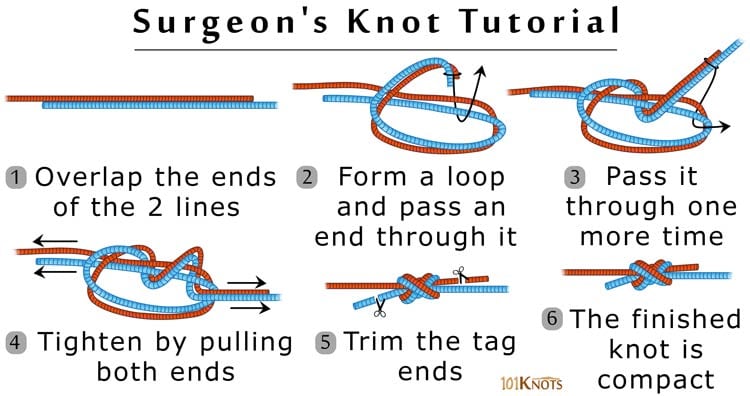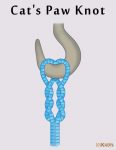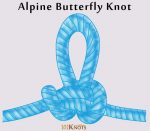Surgeon’s Knot
Based on the square (reef) knot, the surgeon’s knot owes its name to its common use by surgeons to secure the threads in a suture. Though originally a surgical knot it has found wide use in fly fishing to effectively connect the leader to the tippet. It joins 2 lines of equal or unequal diameters as well as lines of different materials.
How to Tie a Surgeon’s Knot
Tips
- When it is properly tied, the knot achieves almost 100% line strength.
- It is also referred to as the double surgeon’s knot since it is actually a double overhand knot with the entire leader passed through the knot twice.
- The triple surgeon’s knot utilizes 3 turns for added security. Similarly, it can be given 4, 5 or 6 turns increasing the complexity and bulkiness but adding strength.
- Hemostats and forceps are sometimes used as tying tools.
- A similar technique is applied for tying the surgeon’s end loop that can be attached to a hook or swivel.
Advantages | Disadvantages |
|
|
Uses
- Fishing
- Tying quilts
- In medical field
- In boat crew survival vests of coast guards
- Attaching a dropper tag to the tippet or leader
- In beading, jewelry (stretch bracelet, necklace) making
Surgeon’s Knot Tying Video
The tying method has been shown clearly in this video.
Steps to Tying a Surgeon’s Knot
- Overlap the ends of the 2 lines
- Form a loop and pass an end through it
- Pass it through one more time
- Tighten by pulling both ends
- Trim the tag ends
- The finished knot is compact
Alternatives
- Blood knot – Harder to tie but works best with lines of same diameters.
- Nail knot – Slimmer version but more complex. Needs a nail or any similar substitute for tying.








